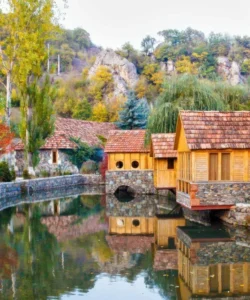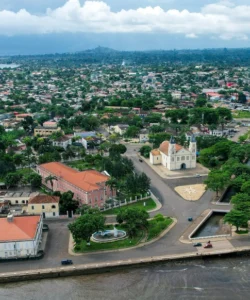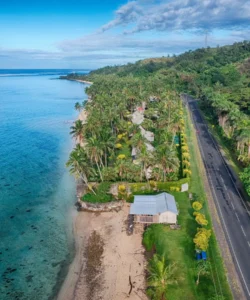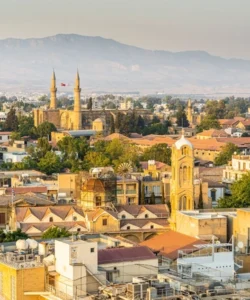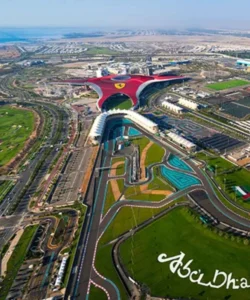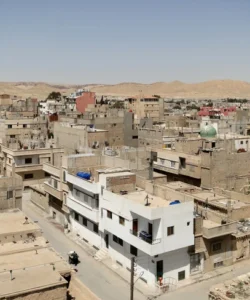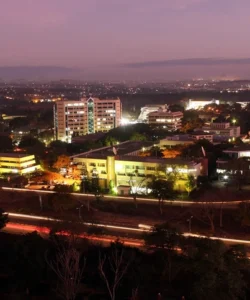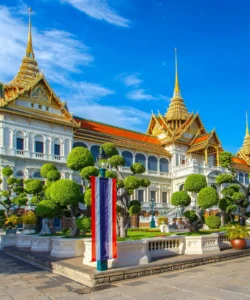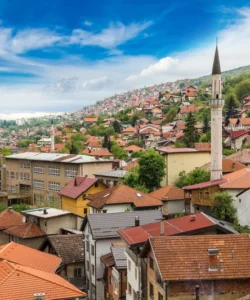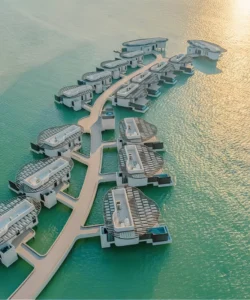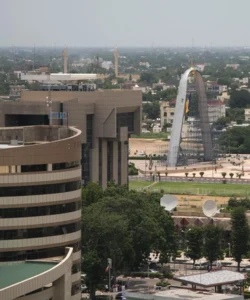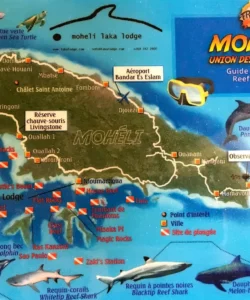Macau, also known as Macao, is a Special Administrative Region (SAR) of the People’s Republic of China, renowned for its unique blend of Chinese and Portuguese cultures. Often referred to as the “Las Vegas of Asia” due to its booming casino industry, Macau offers much more than just gaming, with a rich history, distinctive architecture, and delicious cuisine.
![]()
Area: 32.9 km² (12.7 sq mi)
Population: Approximately 712,651 (2024 estimate), making it one of the most densely populated regions in the world.
Language: The official languages are Chinese (Cantonese) and Portuguese. English is also widely spoken in tourist areas.
Currency: Macanese Pataca (MOP). The Hong Kong Dollar (HKD) is also widely accepted and often used interchangeably.
Religion: A mix of Buddhism, Taoism, Confucianism, and Christianity (primarily Catholicism).
Capital: Macau (the city itself serves as the capital of the SAR)
Major Cities/Areas:
- Macau Peninsula: The historic heart of the region, home to many cultural attractions, casinos, and residential areas.
- Taipa: Known for its charming village, a mix of old and new buildings, and popular dining spots.
- Cotai: A reclaimed land area connecting Taipa and Coloane, home to many of Macau’s integrated resorts and large-scale casinos.
- Coloane: The southernmost island, offering a more tranquil escape with beaches, hiking trails, and a traditional village atmosphere.
Attractions:
- Ruins of St. Paul’s: The iconic facade of a 17th-century church, a UNESCO World Heritage Site.
- Senado Square: A beautiful, cobblestoned public square, also a UNESCO World Heritage Site, surrounded by neoclassical buildings.
- A-Ma Temple: One of Macau’s oldest and most significant temples, dedicated to the goddess of seafarers.
- Macau Tower: Offers panoramic views of the city, with opportunities for bungee jumping and skywalking.
- The Venetian Macao: A massive resort complex featuring canals, gondola rides, and extensive shopping.
- Fisherman’s Wharf: A themed shopping, dining, and entertainment complex.
- Fortaleza do Monte (Mount Fortress): A historic military fort offering great views and housing the Macau Museum.
- Guia Fortress: Includes a lighthouse and chapel, offering more historical insights and views.
- Hac Sa Beach: Macau’s largest natural beach, known for its distinctive black sand.
- Taipa Houses-Museum: A collection of well-preserved colonial houses showcasing Macanese lifestyle.
Wonders: While not officially one of the “Seven Wonders of the World,” Macau’s unique blend of Eastern and Western cultures and its rapid development into a global entertainment hub are often considered remarkable.
Architecture: Macau’s architecture is a captivating blend of Portuguese colonial and traditional Chinese styles. Key examples include:
- Portuguese Colonial Architecture: Evident in Senado Square, St. Paul’s, and many historic buildings throughout the Macau Peninsula and Taipa Village, characterized by pastel colors, arched windows, and intricate tile work.
- Modern and Contemporary Architecture: Dominated by the impressive designs of its casinos and integrated resorts, featuring futuristic and opulent structures, often by renowned international architects (e.g., Zaha Hadid’s work at Studio City).
- Traditional Chinese Temples: Such as the A-Ma Temple, showcasing intricate rooftops, vibrant decorations, and traditional design principles.
Roads: Macau has a well-developed road network with various types of roads, including:
- Avenidas (Avenues): Major thoroughfares like Avenida da Amizade and Avenida Marginal do Patane.
- Ruas (Streets): Smaller streets within urban areas.
- Estradas (Roads): Connecting different areas, such as Estrada do Istmo connecting Taipa and Coloane.
- Ponte (Bridges): Connecting the Macau Peninsula to Taipa and Coloane, notably the Governador Nobre de Carvalho Bridge, Friendship Bridge, and Sai Van Bridge.
Hotels: Macau boasts an extensive range of hotels, from luxurious integrated resorts to boutique options. Highly-rated choices include:
- The Londoner Macao
- The Venetian Macao
- The Parisian Macao
- Andaz Macau
- Galaxy Hotel Macau
- Grand Hyatt Macau
- Mandarin Oriental, Macau
- MGM MACAU
- Wynn Macau
- The Ritz-Carlton, Macau
- The St. Regis Macao
Restaurants: Macau is a foodie paradise, offering a diverse culinary scene from Macanese and Portuguese to various Chinese and international cuisines. Some popular and highly-regarded restaurants include:
- Robuchon au Dôme (French fine dining)
- The Eight (Cantonese, Michelin-starred)
- Jade Dragon (Cantonese)
- Lai Heen (Cantonese)
- Mizumi (Japanese)
- Golden Flower (Tan cuisine)
- Albergue 1601 (Portuguese)
- Fat Siu Lau (Macanese, known for roasted pigeon)
- Many casual eateries and local spots for authentic street food.
Cuisine: Macanese cuisine is a unique fusion of Chinese and Portuguese culinary traditions, often considered the world’s first fusion cuisine. Key dishes and influences include:
- African Chicken: A spicy baked chicken dish with a rich, complex sauce.
- Bacalhau (Codfish): Prepared in various Portuguese styles, such as deep-fried or baked.
- Pork Chop Bun: A simple yet iconic snack featuring a seasoned fried pork chop in a soft bun.
- Minchi: A minced meat dish (pork or beef) with diced potatoes, often served with rice and a fried egg.
- Curry Crab: A flavorful dish combining local crab with rich curry sauce.
- Portuguese Egg Tart (Pastel de Nata): A famous Portuguese pastry with a flaky crust and creamy custard filling.
- Serradura (Macau Pudding): A layered dessert made with crushed biscuits and whipped cream.
- Almond Cookies and Ginger Candy: Popular local treats.
Annual Travel: Macau is a significant tourist destination. In 2024, Macau welcomed nearly 35 million visitors. In the first five months of 2025, the total number of inbound tourists reached 16,327,537, indicating a continued strong recovery in tourism. A significant portion of these visitors come from mainland China, Hong Kong, and Taiwan, with growing numbers of international visitors.































